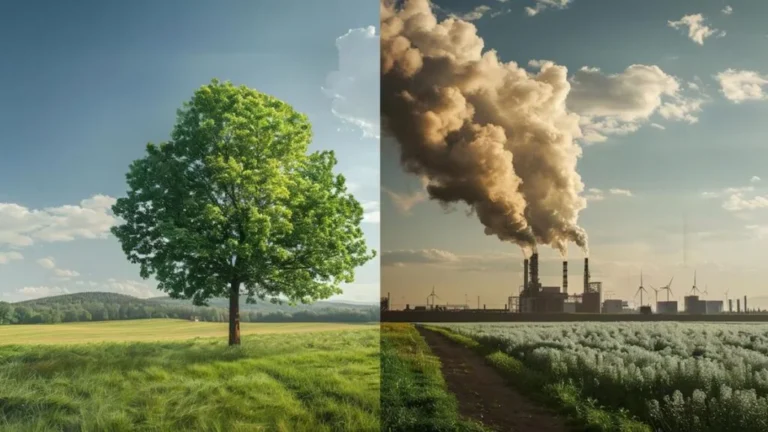Pollution is a universal concern that impacts cities around the globe, albeit in distinct ways. The Dorsten vs Fresno pollution coparament sheds light on how diverse geographic, industrial, and regulatory factors influence environmental health. This article dives deep into the air and water pollution challenges faced by these two cities, their health impacts, and the measures they are implementing to combat these issues.
Air Pollution: Contrasts Between Dorsten and Fresno
Air quality is a key indicator of urban environmental health. While both Dorsten, a German town, and Fresno, a Californian city, face air pollution challenges, their sources and severity differ.
Dorsten’s Air Pollution Profile
Dorsten’s air pollution originates mainly from industrial activities, vehicular emissions, and residential heating during colder months. Germany’s stringent environmental regulations, combined with modern technologies, have enabled Dorsten to maintain relatively low levels of pollutants such as PM10 and nitrogen dioxide. Traffic congestion remains a concern, but the city’s proactive measures in public transport and energy efficiency help mitigate the impact.
Fresno’s Air Quality Struggles
Fresno, located in California’s Central Valley, grapples with more severe air pollution. The region’s geography traps pollutants, creating a natural barrier for airflow. Fresno’s air quality is heavily influenced by agricultural activities, including pesticide usage and dust from tilling, as well as wildfire smoke during the dry season. The high levels of particulate matter (PM2.5) and ozone in Fresno frequently exceed safe thresholds, posing significant health risks to residents.
Water Pollution in Dorsten and Fresno
Water quality is another critical area in the Dorsten vs Fresno pollution coparament, with both cities facing unique challenges.
Dorsten’s Clean Water Initiatives
Dorsten boasts an effective water management system that includes advanced wastewater treatment plants and robust regulations. These efforts minimize pollution from industrial discharge and agricultural runoff. Local authorities conduct regular monitoring of water bodies to ensure early detection and mitigation of contamination. Community involvement through clean-up campaigns and water conservation programs further strengthens Dorsten’s water management efforts.
Fresno’s Water Pollution Challenges
Fresno’s water quality is significantly affected by agricultural runoff, stormwater contamination, and aging infrastructure. The heavy use of fertilizers and pesticides in the region’s vast farmlands leads to nutrient pollution in local rivers and reservoirs. Additionally, outdated water infrastructure poses risks of contamination in urban water supplies. Despite efforts to modernize systems and promote sustainable farming, Fresno’s water pollution challenges remain daunting.
Health Impacts of Pollution in Dorsten and Fresno
The health implications of pollution vary between Dorsten and Fresno, reflecting their unique environmental contexts.
Health Concerns in Dorsten
Dorsten’s moderate pollution levels have been linked to respiratory conditions such as asthma and bronchitis. The combination of industrial emissions and traffic-related pollutants increases the risk of cardiovascular diseases, particularly among vulnerable populations like children and the elderly.
Health Risks in Fresno
In Fresno, the health effects of pollution are more pronounced. Prolonged exposure to PM2.5 and ozone contributes to higher incidences of asthma, chronic obstructive pulmonary disease (COPD), and cardiovascular ailments. Wildfire seasons exacerbate respiratory problems, with fine particulate matter penetrating deep into the lungs. These health risks place a significant burden on Fresno’s healthcare infrastructure.
Policy Measures and Community Engagement
Both cities have adopted unique strategies to combat pollution, highlighting important lessons in environmental governance.
Dorsten’s Sustainable Practices
Dorsten has demonstrated the importance of robust policies and public engagement in pollution control. The city has invested in clean industrial technologies and energy-efficient public transport systems. Educational initiatives encourage residents to adopt sustainable practices such as recycling and reducing energy consumption.
Fresno’s Efforts Toward Sustainability
Fresno is working to address its pollution challenges through stricter vehicle emissions standards, public transport improvements, and sustainable agricultural practices. Community organizations are playing a pivotal role in raising awareness and advocating for change. However, overcoming geographical and infrastructural hurdles requires coordinated efforts among government, industries, and residents.
Innovations in Pollution Control
Technology plays a vital role in addressing the challenges highlighted in the Dorsten vs Fresno pollution coparament.
Technological Advances in Dorsten
Dorsten utilizes real-time pollution monitoring systems and clean technologies in industries to reduce emissions. Advanced wastewater treatment plants ensure the effective removal of contaminants, while public transport innovations aim to decrease vehicle-related pollution.
Emerging Technologies in Fresno
Fresno is beginning to adopt precision agriculture tools to minimize the environmental impact of farming. The city has also installed air quality sensors to better understand pollution patterns and guide policymaking. While these steps are promising, Fresno’s scale of pollution demands broader and faster technological integration.
Conclusion
The Dorsten vs Fresno pollution coparament reveals contrasting environmental challenges and solutions shaped by local conditions. Dorsten exemplifies the effectiveness of strict regulations, community involvement, and technological innovation in maintaining cleaner air and water. In contrast, Fresno highlights the complexities of addressing pollution in a region dominated by agriculture and vulnerable to wildfires.
Both cities offer valuable lessons in environmental management. While Dorsten’s proactive measures demonstrate the power of policies and technology, Fresno underscores the need for innovative solutions tailored to unique challenges. Together, these examples inspire global efforts toward a more sustainable future.
FAQs
- What is the main source of air pollution in Dorsten?
The primary sources include industrial emissions, vehicular traffic, and residential heating, especially during winter. - Why is Fresno’s air quality worse than Dorsten’s?
Fresno’s location in a valley traps pollutants from agriculture, wildfires, and vehicles, leading to significantly worse air quality. - How does Dorsten manage water pollution effectively?
Dorsten uses advanced wastewater treatment plants, regular monitoring, and community involvement to maintain clean water sources. - What health issues are caused by pollution in Fresno?
High levels of PM2.5 and ozone in Fresno lead to asthma, COPD, and cardiovascular diseases, especially during wildfire seasons. - What lessons can be learned from the Dorsten vs Fresno pollution coparament?
Dorsten emphasizes the value of regulations and public participation, while Fresno highlights the need for innovation in complex environmental contexts.

